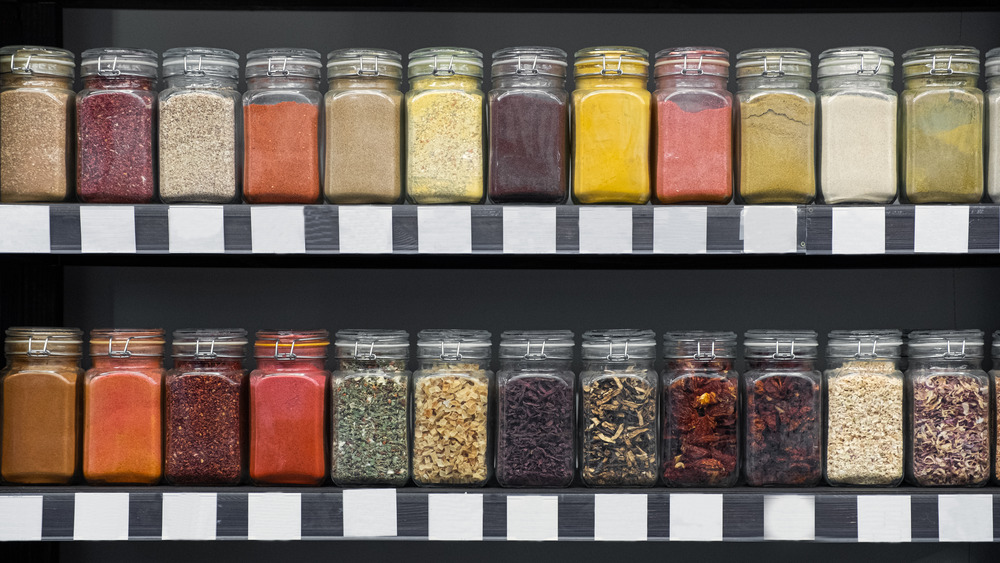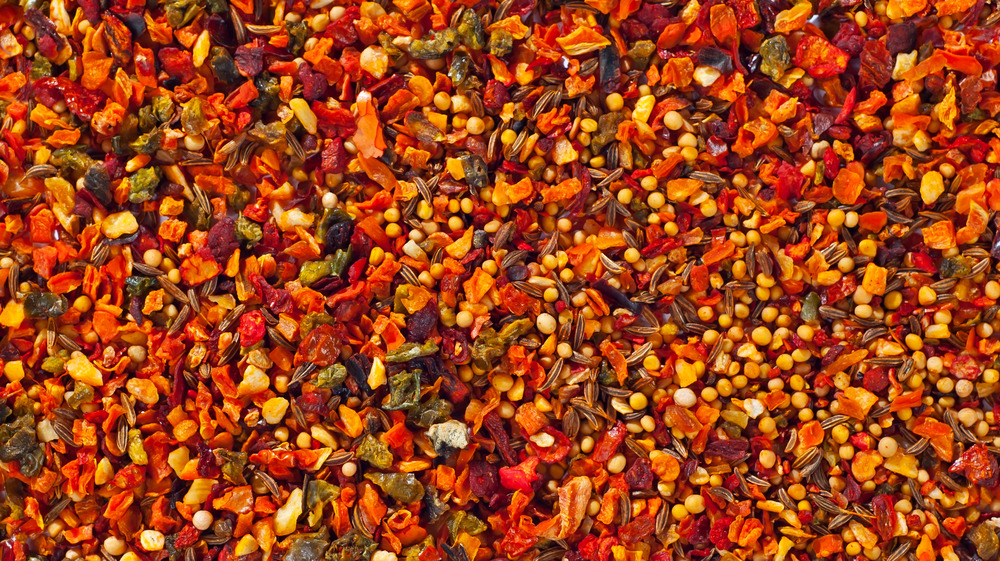Here's Why You Should Never Buy Spice Blends If You're Gluten-Free
If you're one of the 18 million people in the U.S. who have a gluten sensitivity or intolerance (via Beyond Celiac), or if you're simply someone choosing to avoid gluten for your own health reasons, you're well aware of the foods you can't eat. Bread, cereal, donuts, pasta, frozen pizza — there's a laundry list of gluten-containing items you're careful to avoid at the grocery store. Gluten is a family of proteins that are often found in grains, Healthline explains. It's often included in foods to improve the texture (it's what makes your bread fluffy and soft, for instance).
While you might be extra cautious in the bread aisle or the snack aisle, carefully scouring each label for the ingredients and the familiar "gluten-free" label, you may not be as concerned when you're shopping for your seasonings and spices. However, you may want to think twice about tossing that spice blend in your cart if you're trying to eat gluten-free — here's why.
Spice and seasoning blends may contain gluten
While you might think spice blends contain, well, just spices, they can also include some sneaky other ingredients — including gluten. Rachel Begun, a culinary nutritionist in Los Angeles, explained to Food Network that many spice and seasoning blends are mixed with binding agents that contain gluten. Often in the form of wheat flour or wheat starch, these agents are included to prevent the spices from caking together (via Allergic Living). A report by the Canadian Food Inspection Agency (CFIA), which analyzed 268 spice samples across the country, found that nearly a quarter of the spices sampled contained gluten.
Begun cautions that you should also be careful with pre-seasoned foods, like fish or meat, for the exact same reason. To avoid potentially ingesting gluten, she recommends buying the individual spices and mixing them together yourself at home, so you know exactly what you're eating.

